Only released in EOL distros:
Package Summary
pr2_playpen
- Author: Marc Killpack / mkillpack3@gatech.edu, Advisor: Prof. Charlie Kemp, Lab: Healthcare Robotics Lab at Georgia Tech
- License: New BSD
- Source: git https://code.google.com/p/gt-ros-pkg.hrl/ (branch: master)
Contents
Basic Info
More information including a pointer to our demo video will be posted soon.
There are two main uses for this package.
- Replacing the textured stereo with a point cloud from the kinect in the manipulation stack
- Using the system described in the pr2_playpen/hardware folder for automated data capture of manipulation.
INSTRUCTIONS:
- Download gt-ros-pkg and add it to the ROS package path.
- Make sure you have the NI stack installed
- Build the conveyor and playpen system described in /hardware folder in order to run the full demo.
To see a demo of the playpen, run the following on the computer controlling the conveyor and playpen:
$ rosrun pr2_playpen playpen_server.py
and on the PR2 run:
$ roslaunch pr2_playpen/launch_pr2/pr2_UI_segment.launch
This will require the user to select a number of points in a 2D image. The 3D points inside the polygon defined by the user are used for the tabletop object segmentation in the manipulation stack. Points are selected by a left click of the mouse and the user designates that they are finished with a right click.
We can then run:
$ roslaunch pr2_playpen/launch_pr2/pr2_tabletop_manipulation.launch
and
$ rosrun pr2_playpen wg_manipulation.py
all on the PR2. This will run a demo where the PR2 will attempt to grasp each item that is delivered to it at least 2 times before sending a command for the next item to be delivered.
Design and Setup of Playpen
All parts and dimensions are specified in the /hardware folder which includes two manuals for constructing the playpen and the conveyor system as seen below.
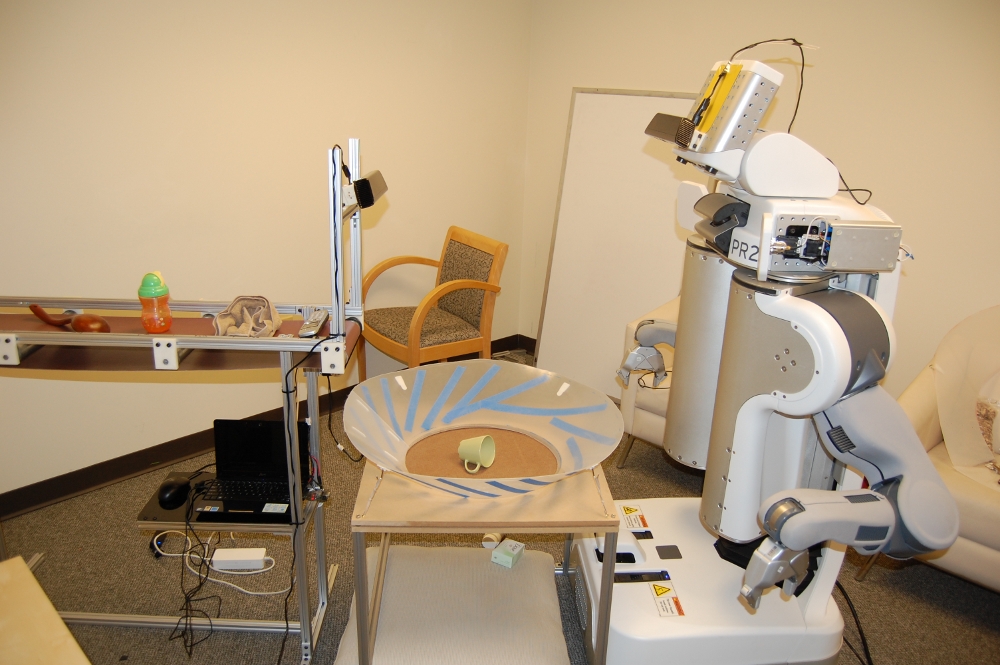
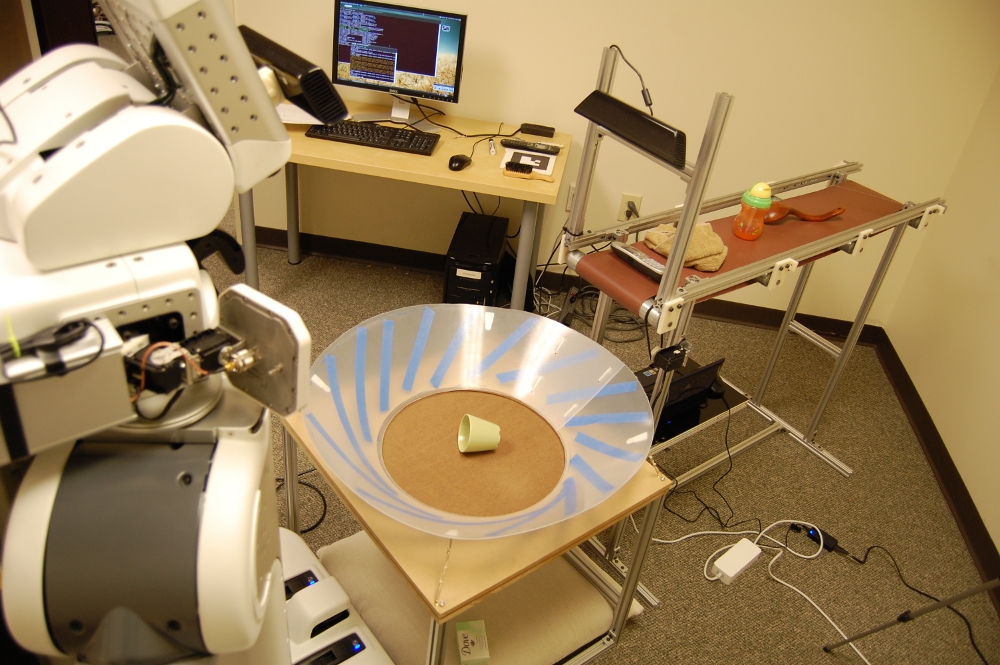
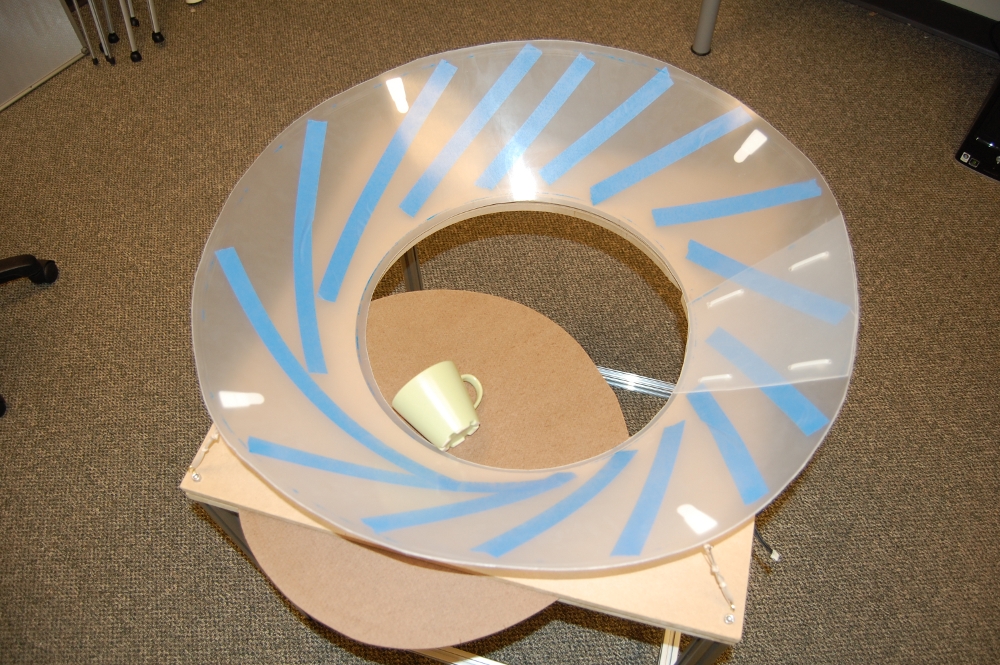
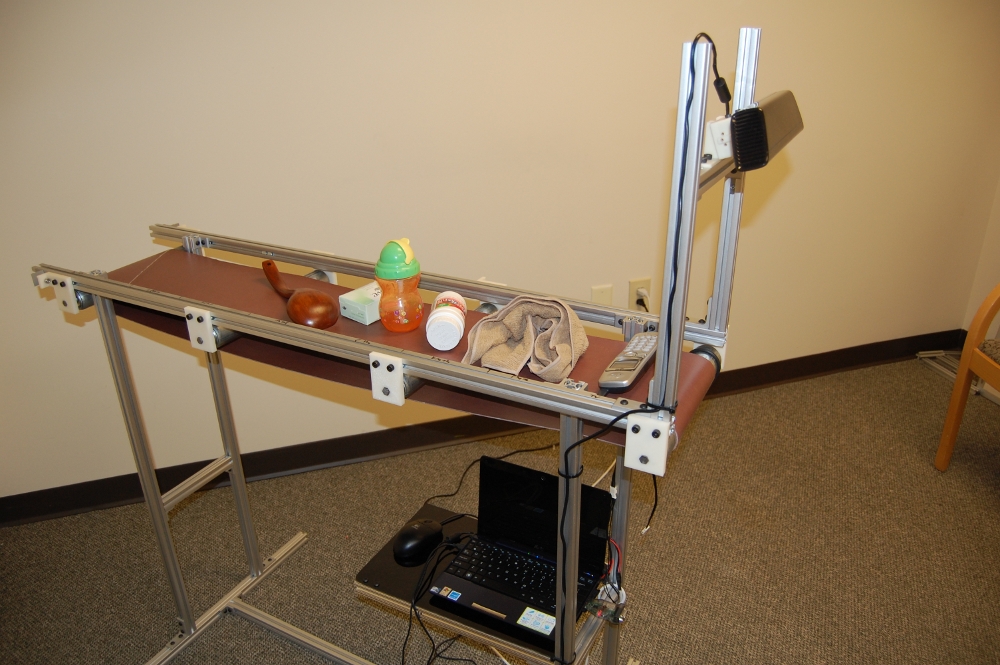

This system is designed to allow the PR2 to manipulate multiple objects over long periods of time without human interaction.
In order to make this possible and to increase the amount of availble data that can be mined from the manipulation interactions, we have custom built a Kinect Sensor mount. The documentation for the mount can be found at http://www.hsi.gatech.edu/hrl-wiki/index.php/Kinect_Sensor_Mount. We were able to mount a Kinect to the PR2 head as well as on the conveyor system. The following is a view in Rviz of the 3D data generated from the Kinect.
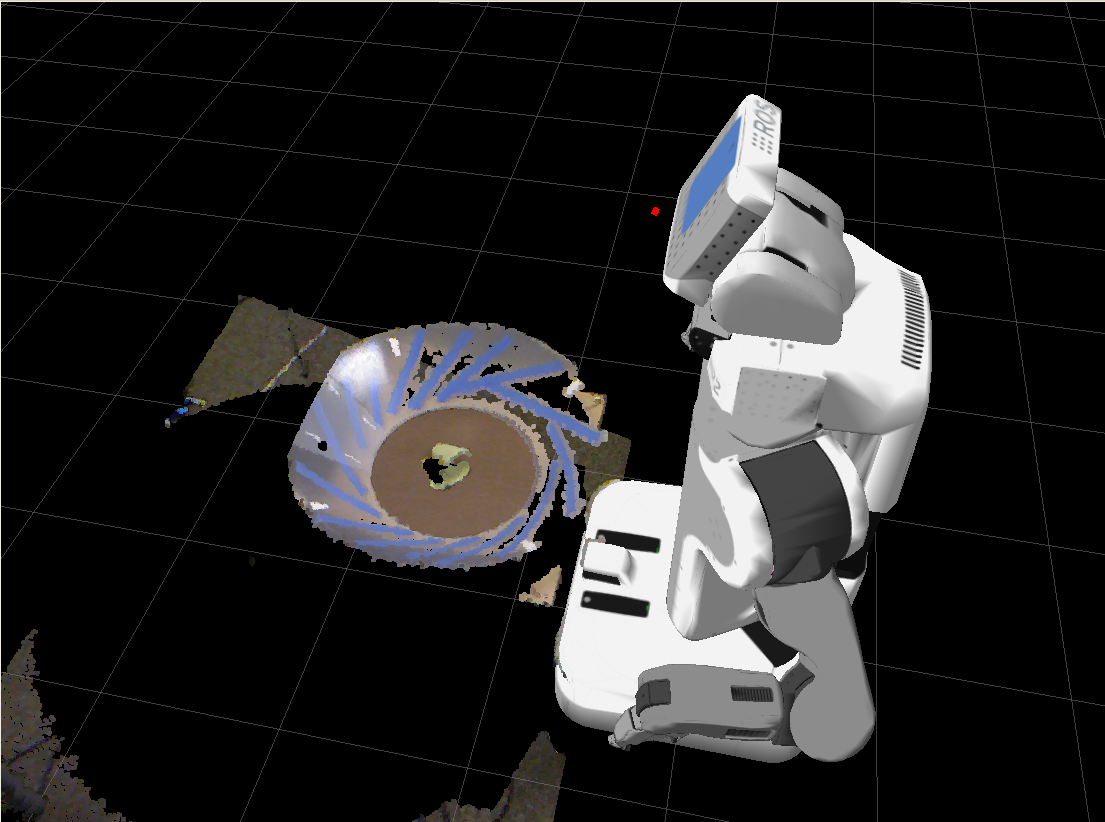
Autonomous Grasping for 60 Hours
For five days in the month of July, we ran the playpen with our overhead grasping code every night for 12 hours. This meant that each night the PR2 attempted around 800 grasps. Other than initial setup each night, the system was robust enough to run autonomously for 60 total hours while attempting over 4000 different grasps. See time lapse video below and the data is available at ftp://ftp-hrl.bme.gatech.edu/playpen_data_sets/.
Older Work
Initial Demo
Below is an initial video showing the capabilities of the system. In this case, we are using the manipulation stack from Willow Garage as well as a revised version of one of the pick and place demos. In particular, we are using the Kinect instead of textured stereo and we require that the head be stationary to aid in segmenting objects from the table top more easily.
First Overnight Data Set
We recently (May 2011) ran the playpen with our overhead grasping code using Willow Garage's tabletop object detection and the Kinect for eight hours. We started it at 7:30 PM and it ran without supervision or human intervention until the specified timeout eight hours later. We learned a lot about needed changes to our code and methods of auto detection for success and failure. However, we're very pleased that the system was robust enough to run overnight.
In the future we hope to objectively compare manipulation code from different universities as well as capture more useful data for machine learning (joint torques, tactile sensor readings, etc.).
Acknowledgements
We'd like to thank Alex Mcneely and Travis Deyle for their work on early prototyping of the playpen system. We'd also like to acknowledge Joel Mathew for his work in compiling and building the Solid Works part assemblies, the assembly manual and the bill of materials which are included in the /hardware folder.
